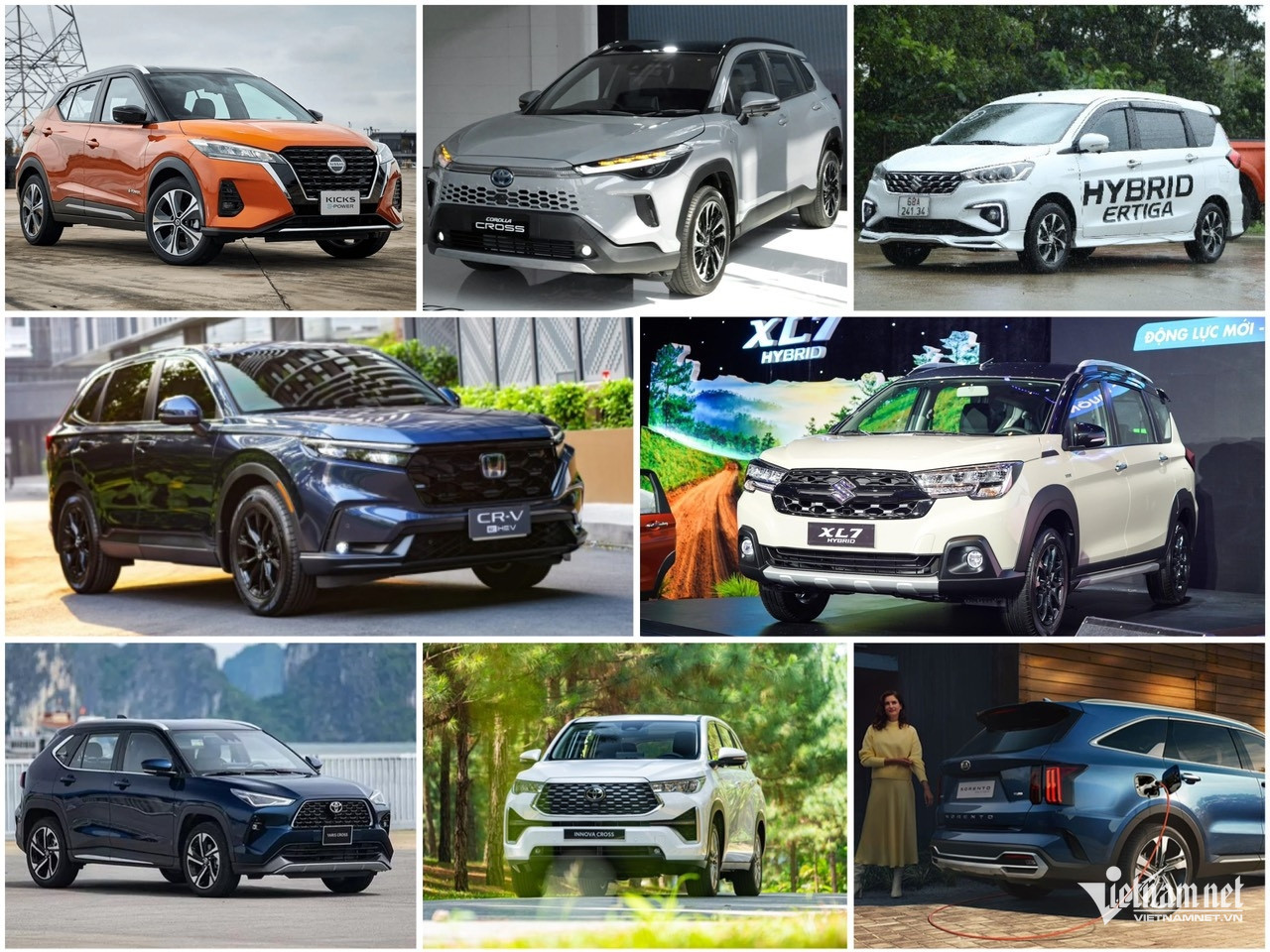
Hybrids first appeared in Vietnam 15 years ago, but they were unfamiliar to the majority of Vietnamese. Lexus, Mercedes-Benz, Audi, Volvo and Land Rover brought hybrid models to Vietnam, but they just aimed at popularizing their brands rather than accessing users.
Only since 2020 have people heard more about hybrids. In that year, Toyota marketed Toyota Corolla Cross HEV (hybrid) model. The appearance of the model blew a wind of change into the market, kicking off the roadmap of the gradual shift to electric or green vehicles in Vietnam.
After two years of interruption because of Covid-19, the process has resumed and the years from 2022 to now are considered the boom period of hybrids with the appearance of many models.
Toyota is the automobile manufacturer which has introduced the highest number of hybrids. It marketed Camry HEV and Corolla HEV in March 2022, Yaris Cross HEV in September 2023 and Innova Cross HEV in November 2023. To date, five Toyota hybrid models are present in different market segments in Vietnam.
Suzuki, the ‘fellow traveler’ of Toyota, which is much less known in Vietnam, has also introduced two hybrids in the market, including Suzuki Ertiga Hybrid in September 2022. The mild-hybrid 1.5L engine allows the small-size MPV model to save fuel very effectively.
Most recently, on August 20, Suzuki Vietnam renewed its best seller – XL7, introducing the HEV version using gasoline and electricity like Ertiga. XL7 Hybrid has some minor upgrades, but the Japanese manufacturer keeps the selling price unchanged in order to compete with Toyota Veloz Cross and Mitsubishi Xpander Cross.
Prior to that, the ‘hybrid playing field’ witnessed the appearance of a series of other hybrid names, such as Nissan Kicks, launched in November 2022 with e-Power engine; Kia Sorento HEV and PHEV (Plug-in Hybrid), introduced in December 2022; Hyundai Santa Fe HEV in March 2023, Haval H6 in August 2023, Honda CR-V with e:HEV RS in October 2023.
With the availability of over 10 HEV popular models for different market segments, from B-C-D-size SUV/crossover, C-D-size to MPV, with the price range of VND500 million-VND1.3 billion, hybrid cars now can satisfy diverse demand from users, no less than cars using internal combustion engine.
Net-zero trend
HEVs are believed to be ‘greener’ than cars using international combustion engine, but they still emit gases into the environment. Meanwhile, Vietnam has stated that it will reduce emissions to zero by 2050. Therefore, a question has been raised whether the massive appearance of hybrids in the market would affect the progress of going greener being followed by Vietnam.
Dam Hoang Phuc from the Hanoi University of Science and Technology (HUST), said, with its great advantages of fuel saving, lower carbon emission and noise, and easy use (not depending on charging stations), hybrids is a reasonable choice for the time to come, when Vietnam is on the way to shifting to BEV (battery electric vehicle).
Phuc cited a survey conducted by Coc Coc, a technology firm, and Deloitte, a consultancy firm, as saying that Vietnamese users like new technologies more than Thai and Indonesians. More than 50 percent of hybrid buyers are interested in environmental factors (CO2 emissions) and economic efficiency (fuel consumption).
Phan Le Hoang Linh from the Ministry of Industry and Trade (MOIT) said among ‘green vehicles’, HEV and PHEV still use internal combustion engines that emit carbon, but the products are prioritized to be developed in many countries.
In China, for example, 50 percent of cars to be sold by 2035 would be HEV, while the remaining would be PHEV, BEV and FCEF (Fuel cell electric vehicle).
In the US, it is expected that 50 percent of cars to be sold by 2030 would be HEV. Japan would also focus on HEV and FCEV in the next 20 years. The country is also considering developing internal combustion engine cars using hydro.
Except the European market, most other large markets in the world still plan to develop HEV and PHEV in the next 10 years as an intermediary solution before entering the BEV era.
Under the national green energy transition strategy of the transport sector, from now to 2030, Vietnam would step up production, assembly and import of electric vehicles of different kinds, including HEV.
Dinh Quy